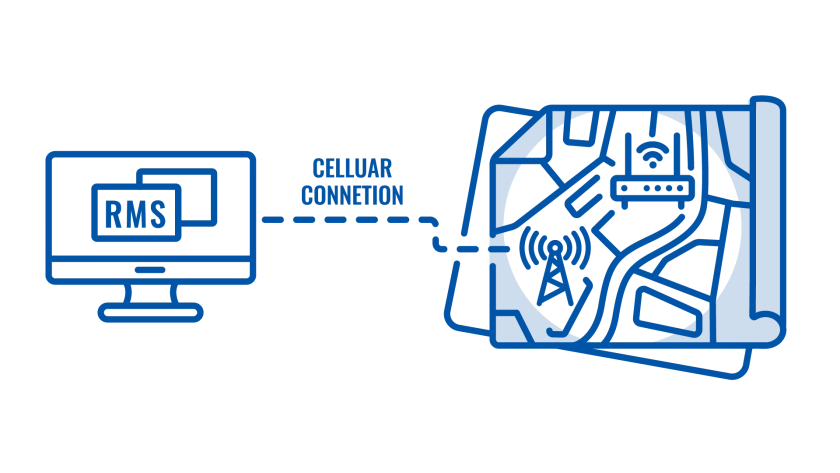GPS-LESS DEVICE LOCALIZATION WITH RMS
As the Internet of Things connects an exponential number of devices, solutions, and people, it becomes increasingly difficult to ignore the importance of cellular as a WAN infrastructure. The age of the trusty Ethernet cable isn’t coming to an end any time soon, but the world is big and globalized enough that for many IoT solutions, cellular is the way to go.


The device may not have a built-in GPS, but the cell tower that provides it with cellular connectivity is still in a fixed location. Once a day, RMS checks the cell ID to which the device is connected and approximates where on the map the device is located in relation to that cell tower. You can find it on your device page by clicking on Device Map.
There are many reasons why approximating the location of your devices this way is useful. It allows you to track them in case they get lost or stolen, or if your business is mobile by nature and keeping track of your devices is a regular part of your checklist. It can also help with troubleshooting, as the engineer can correlate problems with the device with environmental factors surrounding it, such as if the area loses power.
Knowing which cell tower provides your devices with cellular internet can also inform how you want to distribute your devices across a particular area. Perhaps you want to ensure all of them get it from the same source, or maybe the opposite – you rather diversify the sources as much as possible. Different IoT solutions would have different ideas of the optimal positioning of their devices, but more available data is welcome either way.
As it happens, the popularity of cellular internet enables our Remote Management System (RMS) to approximate the location of any cellular router or gateway with an active mobile connection – even if the device doesn’t have any GPS capabilities. How does that work?
This isn’t a new feature, by the way – we knew it would be useful for our clients, so RMS already does this, currently working with 4G, 3G, and 2G. Will it work with 5G one day? Definitely! It is only a matter of time until 5G gains enough momentum and establishes itself as the new standard, and RMS will be ready for it once that happens.